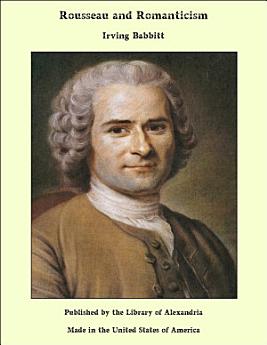Rousseau and Romanticism
Acerca de este libro electrónico
Now to define in a Socratic way two things are necessary: one must learn to see a common element in things that are apparently different and also to discriminate between things that are apparently similar. A Newton, to take the familiar instance of the former process, saw a common element in the fall of an apple and the motion of a planet; and one may perhaps without being a literary Newton discover a common element in all the main uses of the word romantic as well as in all the main uses of the word classic; though some of the things to which the word romantic in particular has been applied seem, it must be admitted, at least as far apart as the fall of an apple and the motion of a planet. The first step is to perceive the something that connects two or more of these things apparently so diverse, and then it may be found necessary to refer this unifying trait itself back to something still more general, and so on until we arrive, not indeed at anything absoluteÑthe absolute will always elude usÑbut at what Goethe calls the original or underlying phenomenon (Urphnomen). A fruitful source of false definition is to take as primary in a more or less closely allied group of facts what is actually secondaryÑfor example, to fix upon the return to the Middle Ages as the central fact in romanticism, whereas this return is only symptomatic; it is very far from being the original phenomenon. Confused and incomplete definitions of romanticism have indeed just that originÑthey seek to put at the centre something that though romantic is not central but peripheral, and so the whole subject is thrown out of perspective.







